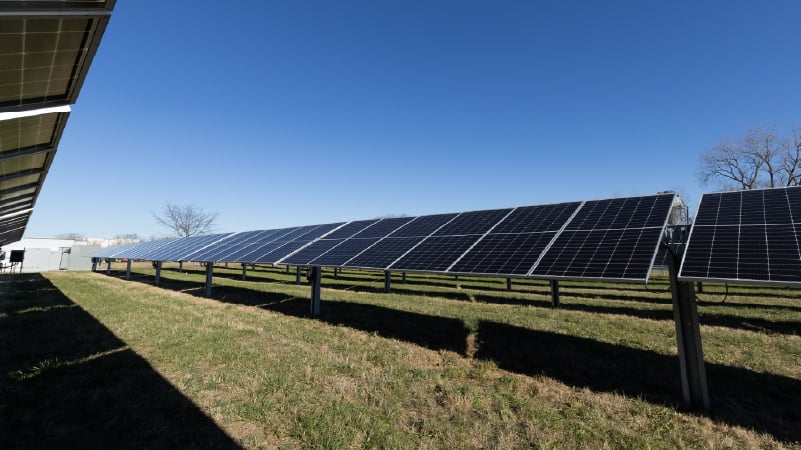What is a battery energy storage system (BESS)?
A battery energy storage system (BESS) stores electricity for later use. In common practice, BESS may charge from the grid or other forms of local generation including wind, solar, generators, etc. Applications of BESS may include supporting off grid systems but also commonly are connected to the grid to provide increased stability and diverse grid support services.
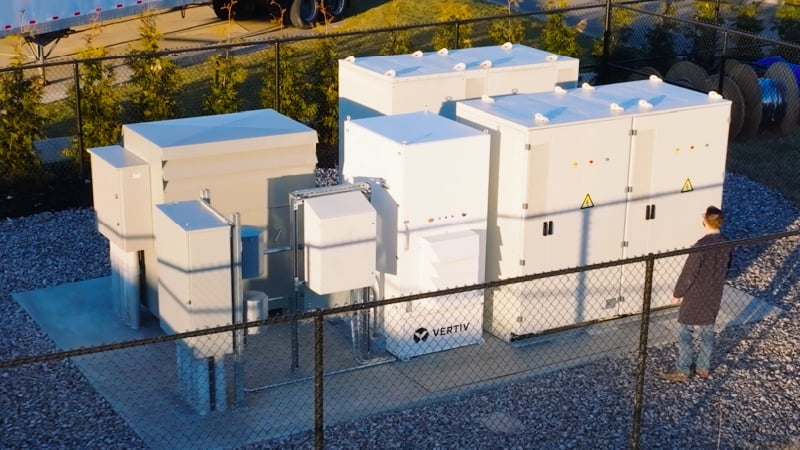
With wind or solar battery storage, BESS can supply power during low-generation periods. Integrating with a grid-interactive UPS, BESS enables peak shaving. This strategy reduces power consumption during peak demand by discharging stored energy.
Importance of BESS
The increasing energy demand is outpacing the capabilities of traditional utilities, driven by industrial growth, urban expansion, and the exponential rise in high-performance computing (HPC) services like artificial intelligence (AI) and machine learning (ML). Data centers alone account for 2 percent of global electricity consumption. Advancements in data centers, AI, and cryptocurrencies push electricity usage from 460 TWh (terawatt-hour) in 2022 to around 1,000 TWh by 2026. Operators must meet this high demand while dealing with grid instability and stringent decarbonization goals. (see Figure 2).
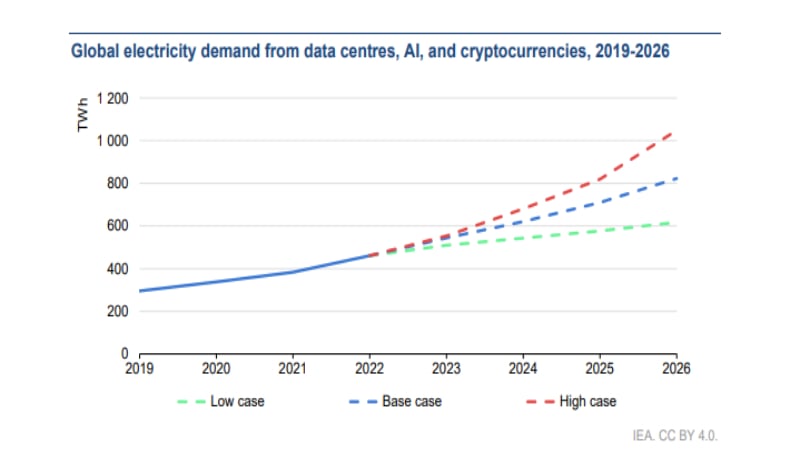
Source: International Energy Agency
Given the soaring electricity usage, BESS is pivotal for enhancing grid reliability and supporting renewable energy integration. They not only store excess energy for times of high demand but also provide backup power during outages, maintaining continuous operations. Additionally, BESS contributes to cost savings by reducing the need for expensive peak-time electricity purchases.
How BESS works
A typical BESS consists of battery cells arranged into modules and connected into larger cubes to achieve the desired direct-current (DC) voltage. The DC output from these strings is routed into a power conversion system (PCS). This system converts the power to an alternating current (AC), routed through transformers and switchgear for use by the facility or the grid.
Battery energy storage system components
Battery energy storage systems comprise various components (see Figure 3) that efficiently store, manage and distribute electrical energy. Understanding each part's role is crucial for optimizing performance and maintaining safety in energy management and backup power applications.
- Battery cells: Store electrical energy for later use, enabling efficient energy management and backup power supply.
- Modules: Function as the basic units for storing and managing electrical energy efficiently.
- Strings: Connect battery modules in a series to achieve the required voltage in energy storage systems.
- PCS or inverter: Converts stored DC power from batteries into AC power for use or grid supply and vice versa.
- Battery management system (BMS): Monitors and manages the state of charge, temperature, and health of battery cells to facilitate optimal performance and safety.
- Thermal management system: Regulates the temperature of the battery system to maintain efficiency and prevent overheating.
- Energy management system (EMS): Oversees the operation of the BESS, coordinating the balance between power demand and supply for optimal efficiency.
- Grid controller: Manages the flow of electricity between the batteries and the grid, allowing efficient energy distribution and grid stability.
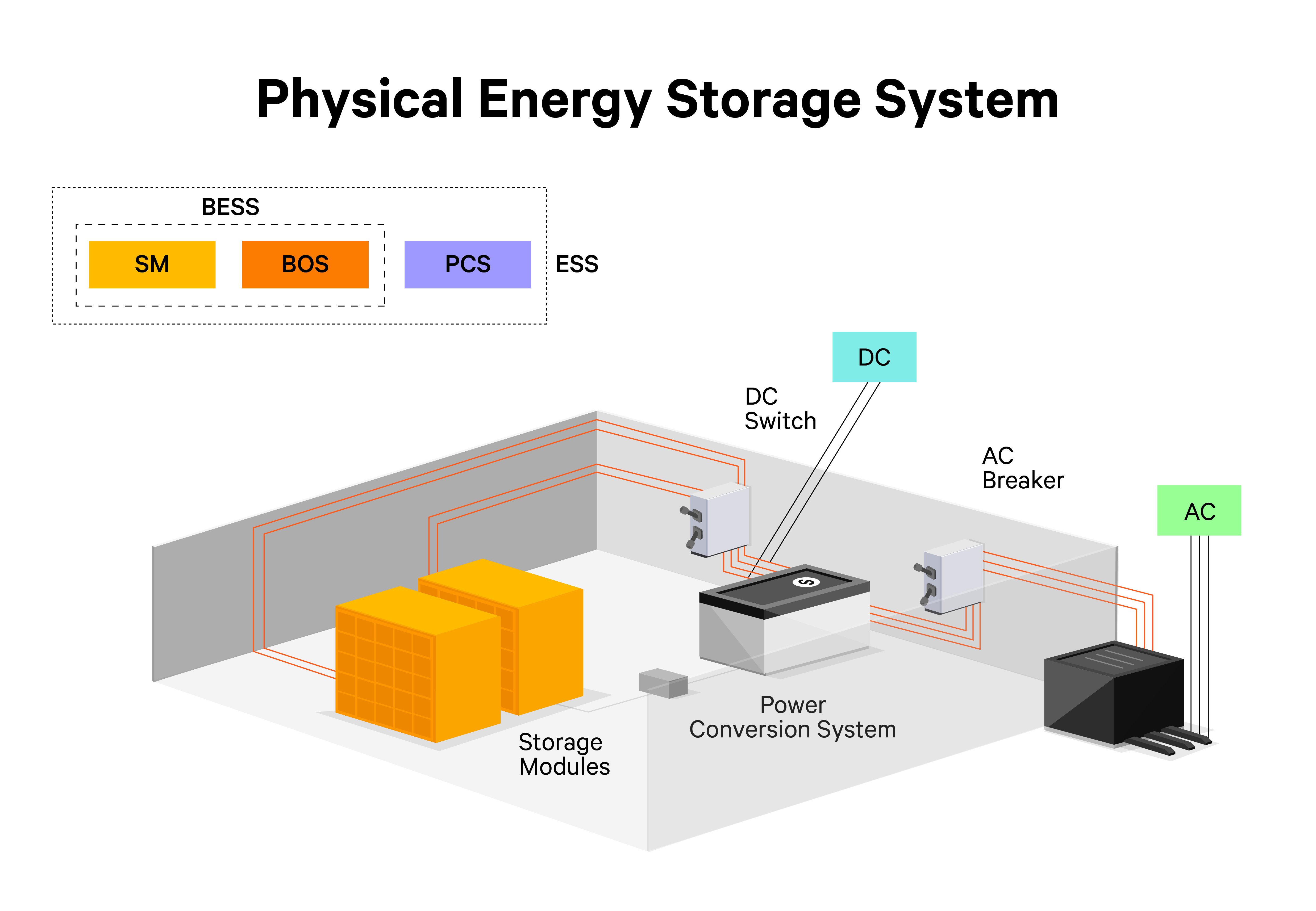
Types of BESS
BESS units utilize various battery types tailored for specific applications, including lithium-ion for efficiency, lead acid for cost-effectiveness, and flow batteries for scalability. These systems are essential for maintaining energy stability and reliability in data centers and other mission-critical microgrids.
- Lithium-ion batteries: Known for their high energy density and efficiency, making them suitable for a wide range of applications.
- Lead-acid batteries: Traditional and cost-effective, commonly used for backup power systems despite their lower energy density.
- Flow batteries: Utilize liquid electrolytes, offering scalability and long cycle life, which are ideal for large-scale energy storage.
- Nickel-cadmium batteries: Durable and reliable in extreme temperatures, though less common due to environmental concerns.
- Sodium-sulfur batteries: High-temperature batteries with high energy density, used primarily in large, stationary applications.
These types of BESS have evolved to cater to various needs. Modern BESS, especially in data centers and other mission-critical microgrids, relies heavily on advanced battery technology to maintain stability, reliability, and efficiency in energy management.
Key features of modern BESS
Modern BESSs boost microgrid resilience by providing reliable backup power and stabilizing energy supply. They efficiently manage demand, reduce reliance on traditional power, and integrate seamlessly with renewable sources. (See Figure 3)
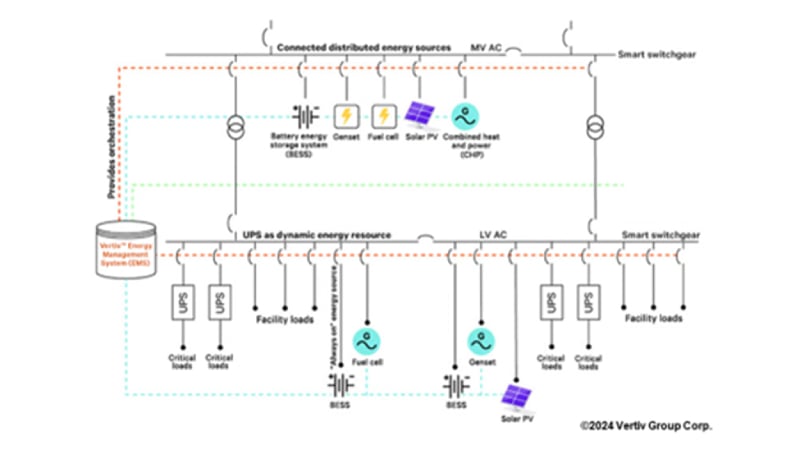
Advanced battery technology
Modern BESS units, especially those used in mission-critical microgrids, are already equipped with long-life, heat-tolerant lithium ferrophosphate (LFP) batteries. Manufacturers of these units have primarily chosen lithium-ion batteries due to their reduced costs and improved energy density.
Peak shaving or peak demand reduction
Many utilities offer incentives for reducing electricity use during peak periods, which is viable if alternative power sources are available. A BESS can charge during low-demand times and discharge during peak periods to supply facility power, minimizing grid reliance. Using BESS with alternative energy sources enables peak demand reduction without fossil fuels.
Renewable energy firming
A BESS with a microgrid controller can use solar PV to stabilize solar production fluctuations. This setup prevents utilities from curtailing solar output and allows the capture of solar energy that might be wasted during production changes, like those caused by cloud cover.
Spinning reserve
Microgrids often use multiple generators, which can lead to inefficiency if they cycle on and off outside their optimal efficiency range of 30 to 40%. BESS units can reduce generator starts by serving additional load and maintaining generators within their optimal efficiency. This approach enhances fuel efficiency, lowers emissions, and minimizes generator wear and tear.
Learn more:

Microgrids, using distributed energy resources like BESS, offer a more efficient and dynamic alternative to diesel generators for managing always-on power assets and enhancing energy supply.
Advantages of BESS
Enterprises with mission-critical microgrids can optimize energy management and enhance grid stability by deploying BESS units into their facilities. Some of the benefits of having a BESS are the following:
Enhanced reliability
BESS can facilitate uninterrupted operations in data centers and other critical facilities by providing backup power during outages and enabling peak shaving. This improves overall grid performance and reduces disruption risks.
Improved efficiency
Energy storage effectively manages supply and demand, allowing enterprises to utilize resources when they are most needed, preventing waste, and enhancing overall system efficiency.
Reduced carbon footprint
BESS units reduce reliance on fossil fuels by decreasing the use of diesel generators or dependence on utility grids. Solar or wind energy storage enables a consistent power supply for campuses relying on alternative sources despite their unstable nature.
Operational flexibility
By efficiently managing energy storage and distribution, BESS allows operators to switch between different functions as needed, optimizing energy usage and maintaining stability in power supply.
Learn more:
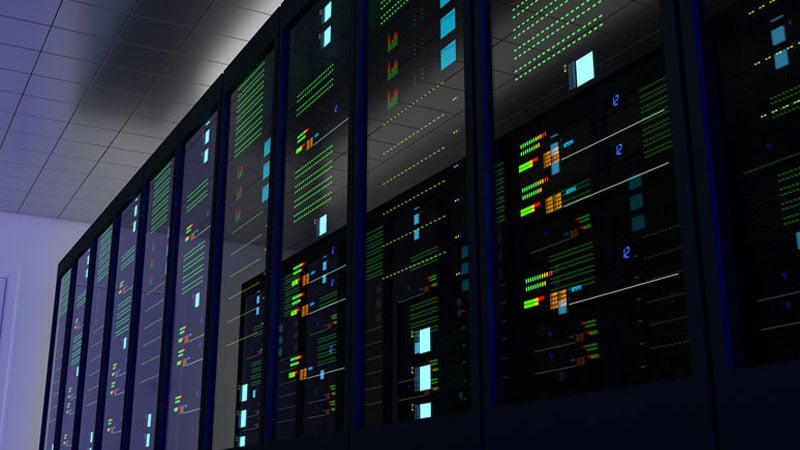
Explore Omdia's report on how BESS, exemplified by Vertiv's data center integration, offers scalable solutions, optimized efficiency, and reduced environmental impact, making it crucial for next-gen data centers.
Imperatives for integrating BESS into microgrids
Integrating BESS into a microgrid requires careful planning, such as incorporating other power assets like generators and substations. Key considerations include addressing specific needs related to microgrid controllers and batteries.
Duration limitations
While lithium-ion battery-based BESS offers valuable energy solutions, they complement rather than replace backup generators. Facility teams seeking to replace traditional diesel generators might want to look into fuel cells.
A LIB-based BESS can discharge for about four hours, but global backup power needs can reach 72 to 96 hours, making BESS suitable only for short-term or priority load backup. Solar plus battery storage is also inadequate as a complete backup solution due to prohibitive land use requirements.
Fire Safety
Maintaining fire safety in stationary BESS is crucial for urban installations, especially given the flammable nature of lithium-ion batteries. Compliance with NFPA 855-20 and certification to UL9540A are essential to contain thermal events within a single rack. Partnering with experts helps facility teams deploy effective fire suppression strategies, such as water deluge systems and electrolyte gas detection.
Learn more:
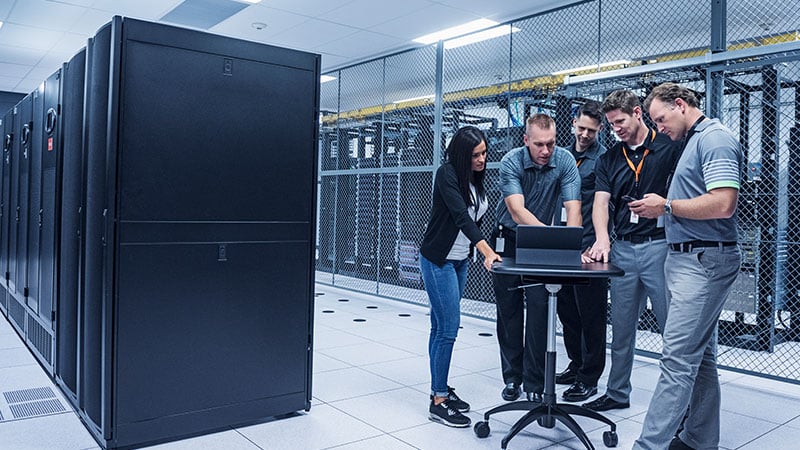
Learn more about the current and upcoming data center business challenges on power, carbon emissions, and equipment resilience, and how adopting BYOP can provide a future-ready solution for energy independence.
Enhancing grid independence with BESS
Integrating BESS into modern energy frameworks is pivotal for enhancing grid reliability and optimizing energy management. Equipped with advanced components, BESS enhances the stability of energy supply and offers operational flexibility critical for enterprises operating on unstable utility grids. As energy demands continue to rise, the strategic deployment of BESS will play a crucial role in achieving a more sustainable and resilient future.
Manage power your way
Visit Vertiv™ Dynamic Power to explore always-on microgrid solutions designed for continuous operation and optimized energy management. Our systems integrate seamlessly with your infrastructure, enabling reliable power supply, reduced carbon emissions and efficient energy use. Partner with us to address your power needs and construct a resilient infrastructure.



